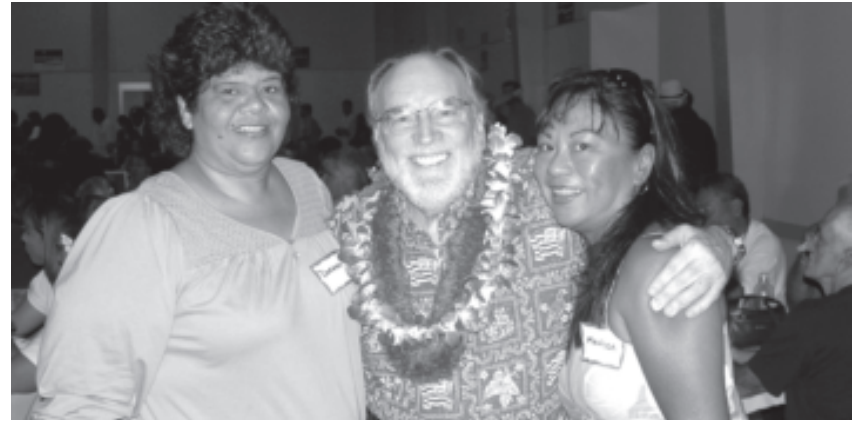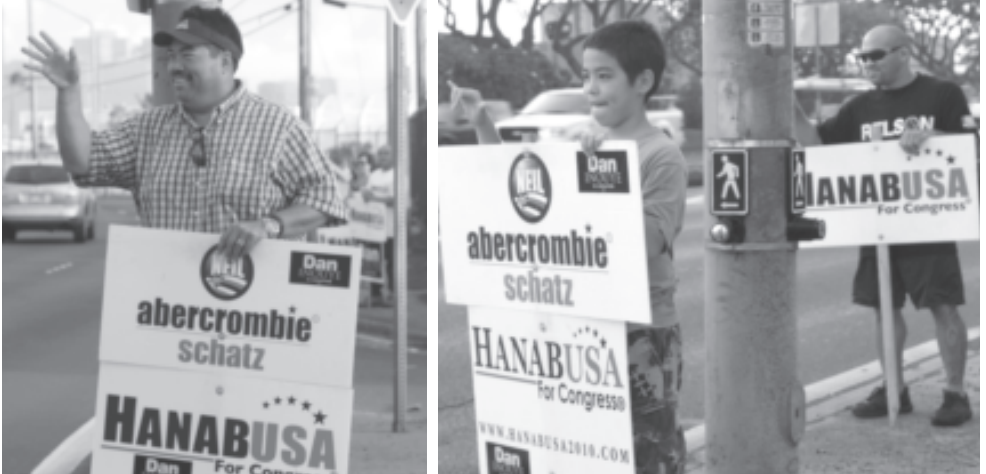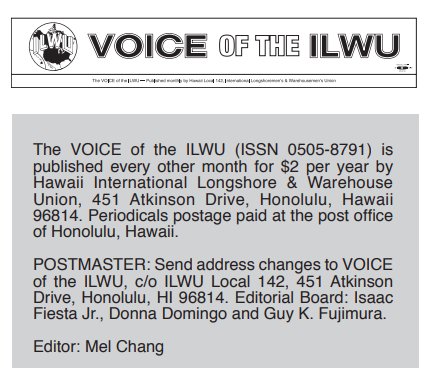Democrats and union-endorsed candidates did very well in Hawaii’s November 2 General Election. Democrats won all of the most important races—the governor’s race, the three congressional races, and 13 state senate seats, including one seat that was held by a Republican. In the Hawaii State Senate there is now only one Republican, along with 24 Democrats.
In the 51-member Hawaii State House, Republicans picked up two seats and now have eight members in the House, while Democrats won election to 43 seats.
When the 76 members of Hawaii’s State Legislature convene in 2011, there will be nine Republican members while the Democrats will have 67 members.
Hawaii now holds the first place record of the highest percentage of Democrats in the State Legislature—88 percent. Rhode Island was in first place but dropped to 84 percent after the 2010 election.
Out of 59 union endorsed candidates in statewide races and in the state legislature, 55 won their elections and four lost. Of the four losses, one was an incumbent (Joe Bertram); one was a long shot challenge to a Republican incumbent; and two were open seats with no incumbents.
In county races, the ILWU endorsed 26 candidates—19 won and seven lost. The most important loss was the mayor of Maui, Charmaine Tavares who was defeated by former mayor Alan Arakawa.
Hawaii votes Democratic
Hawaii Republicans had high hopes this year. The mood of the country seemed to be shifting their way. They expected Duke Aiona to win the governor’s race and Charles Djou to win the U.S. House District One seat. They were hoping to pick up 15 seats in the State Legislature, where there were 10 open seats with no incumbents.
Public opinion polls showed Aiona gaining support and trailing Abercrombie by only five percent the week before the elections. Two polls showed Djou winning by 3-4 percent and one poll showed Hanabusa winning by 5 percent. [Source: Real Clear Politics]
Outside organizations spent millions of dollars in Hawaii to sway the elections, mostly by attacking the person running against the candidate they favored. Organizations that supported Democrats would attack the Republican opponent, and organizations that supported Republicans would attack the Democratic candidate. Some of these attack ads informed and educated the public on the issues, but just as many ads were designed to mislead the public and make the candidate look bad.
Some of the worst negative ads came from Republican support groups. These television attack ads used pictures which made the candidate look ugly, made deliberately deceptive statements about the candidate, or twisted the facts about the candidate’s record.

Kauai Division PAC Coordinator Doreen Kua worked hard with Division Clerk Melissa Ragasa and ILWU members to elect Governor Neil Abercrombie (center) in the Nov. 2 General Election.
Hawaii voters were not fooled by the negative campaign and attack ads and elected Democrats by wide margins. Hawaii’s Republicans lost two and won two—for a new gain of zero. Republicans lost the U.S. House District 1 race and lost one seat in the Hawaii Senate—they won two seats in the House. They lost the governor’s race by a wide margin of 17 percent and Colleen Hanabusa beat Charges Djou by 6.1 percent.
Why so many attack ads?
A January 2010 Supreme Court ruling lifted the limits on contributions and spending by individuals and organizations, as long as the spending was independent and the candidate was not involved in any way. Democrats wanted to require public disclosure of the names of donors and the amount they contributed, which is already required for contributions made to candidates or political parties. Republicans opposed open disclosure, saying it would discourage donors. As it stands now, wealthy individuals and corporations can make their contributions in secret.
The money is still being counted, but at least $4 billion was spent to influence the 2010 elections and 89 percent of the spending favored Republicans. The money was used for attack ads which ran 9 to 1 against Democrats. In many states, the attacks against Democrats were far worse than those seen in Hawaii. You can get more information on how much money was contributed to influence the elections and how much was given to individual candidates at www.opensecrets.org or the Federal Election Commission (www.fec.gov).
Obama & Democrats mistakenly blamed
Many Americans are afraid of losing their jobs and frustrated that the federal government isn’t doing enough. Some Americans are angry about the bailouts of big business and Wallstreet bankers and the huge federal deficit to pay for the bailouts and stimulate the economy. A new political movement appeared to gain popularity—the TEA Party (Taxed Enough Already)—which demanded lower taxes and smaller government.

Longshore members like Dana Kea (left, with Delburn Sequenza and Shawna Rapoza in the background) worked hard for ILWU-endorsed candidates. Brad Scott (right) brought out his young son Kama to the regular longshore sign-waving on Nimitz Highway.
Much of the country’s financial crisis and growing government debt had roots in policies passed during the Bush Presidency when Republicans controlled the White House and Congress. When Barack Obama was elected President, the financial crisis deepened and the federal government had to take drastic steps, bailout banks, and pump money into the economy to prevent the situation from getting worse. After the economy stabilized, Republicans did everything they could to block and undermine Obama’s efforts to make some real changes.
Very little of this was accurately or fairly reported in the media, which is heavily biased in favor of Conservatism and Republican ideology. The Conservative propaganda machinery played on the public’s anger and fears and blamed everything on President Obama, the federal government, and the Democrats. False and misleading claims were made that the Democrats and government would control our lives, kill jobs, drive small business into bankruptcy, and destroy America.
Worried about jobs
Democrats kept control of the U.S. Senate, but lost seven seats to Republicans. Democrats lost the majority in the House of Representatives, where Republicans and TEA Party candidates (who say they will caucus with Republicans) picked up 60 seats.
The Conservative media played up the election results as a stunning rejection of Obama and the Democrats. A close analysis of the results review the elections was not a rejection of President Obama’s policies or Democrats, nor were the elections an endorsement of Republicans and their conservative ideas.
No big change
Big money spent on negative attacks on Democrats led to losses in a number of closely divided districts which were barely won by Democrats in 2008 and 2006. The misinformation spread by the conservative media led to larger voter turnout among white men, seniors, and conservatives which favored Republicans and TEA Party candidates. On the other hand, Democrats were hurt by lower then usual turnout among young voters and minorities who favor Democrats.
Half of the seats lost by Democrats were held by members of the Conservative Blue Dog Coalition, who often sided with Republicans and voted against their Party.
Exit polls, which ask voters about their choices after they vote, reviewed the bad economy was their single greatest concern. They wanted government to do more to create jobs, even if that meant spending more money. Their anger and frustration more often resulted in a vote against the incumbent Democrat.
The conclusion? Get ready for the 2012 elections. Register your family, friends, and co-workers to vote. Keep informed about the real issues and don’t be misled by the Conservative media (like FOX). Get more involved with your union’s political action program and volunteer more time to help.

